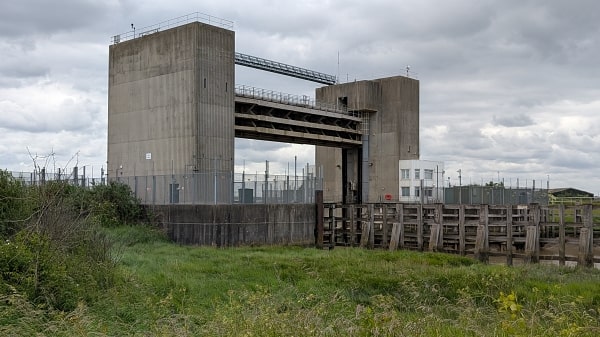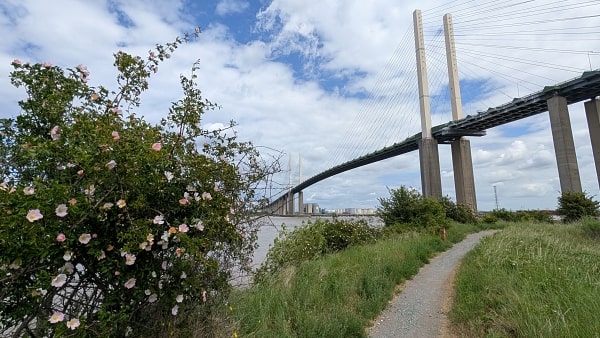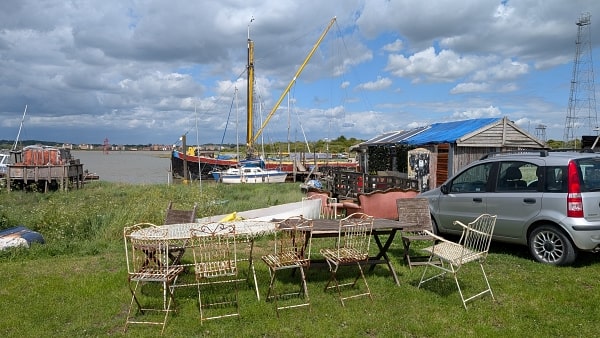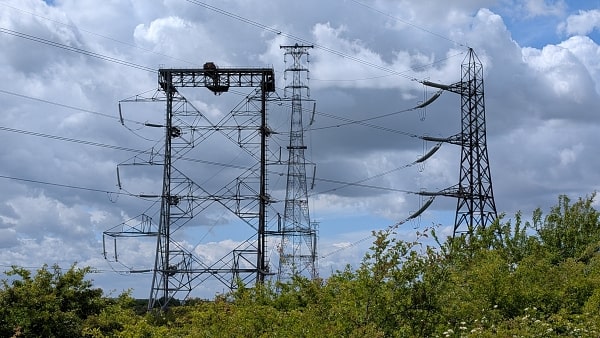What a strange mixture this section is. I’m only as far east as Gravesend at present, and there’s a mix of the urban and the industrial, with a creek or two to hark back to older times.
But that’s going to change, when I get out to the Cliffe Marshes and the area around Little Halstow – and the Medway towns, in between, will bring a whole load of historical content. The Little Halstow section, linking Rainham with Swale, is yet to be opened.
As at 2025, OS maps double-brand the stretch from the Thames Barrier, a mile west of Woolwich, to Barnes Cray east of Erith as both ECP and Thames Path. That’s not strictly accurate; see my Thames Path Woolwich to Goring page for more information.
Monday 28 January 2013: Erith to Woolwich, 7½ miles
No thought of the England Coast Path then, for it hadn’t been invented. But, then as now, the Thames Path was busy appropriating the south bank of the river east of the Woolwich Flood Barrier as its own, and it still is, sort of. I was still four years away from completing the TP but wanted to check out this section of the trail, and it’s described here.
Note that I’d walked this section ‘backwards’ compared to my normal Kent Coast direction, because I was walking the Thames Path from sea to source. Also, in those days the revised Thames Path ‘start’ was at the Darent Flood barrier, so I’d started from Slade Green station as the easiest access, giving an 11-mile walk in total.
Friday 20 July 2001: Erith to Barnes Cray, 4½ miles
This for me was the first stage of the London Loop, part of a day that took me 15 miles to Petts Wood. Not interesting enough to merit re-walking 20+ years on, but there’s a smidgeon more information here.
Wednesday 28 May 2025: Barnes Cray to Gravesend, 13 miles
There’s a mile walking back along the River Cray to start with, before crossing the River Darent and walking on its eastern bank, up to the river’s flood barrier. This is a major reason why I’d not started again at Erith: there’s five miles of walking to get from one side of the barrier to the other, which is the sort of thing that can happen with coastal walking, and you don’t want it to happen more than you can get away with.
From the barrier, the Thames runs pretty straight for four miles, crossing under the Dartford Bridge. There’s no obstructions to the path, so this is straightforward walking. I spent part of the time wondering where we’d come ashore on a stage of the 2017 Silk River walks – turns out I was unusually wrong in my memories; we’d landed on shingle not at a jetty, then headed for Dartford rather than walked by the river.

Darent flood barrier, from the eastern side

The Dartford bridge
There is, of course, a lot of industry, on both sides of the river. There’s an urban interlude at Greenhithe, though little of its maritime heritage remains, before heading out to the Swanscombe peninsula. This is post-industrial land, and something now of a wildlife haven. It’s threatened, of course, first by a theme park proposal a few years ago, now by housing. If they house people here the 623ft electricity pylon, carrying 400kV power cables to a twin on the Essex bank, might serve as the local landmark. What might happen to the little boating community at Broadness, heaven only knows.
There are fewer hints of wildlife for the last three miles or so into Gravesend. New housing at Northfleet and Rosherville forced diversions; in between, paper processing is the Big Thing, with a tower proudly boasting an Andrex advert at its top. Gravesend itself comes quite quickly; it’s a compact town centre, which I had explored on a later Silk River day, but alas since then the centuries-old ferry to Tilbury had ceased operation, a victim of local government ‘austerity’.

Boatyard at Broadness

The Swanscombe pylon
